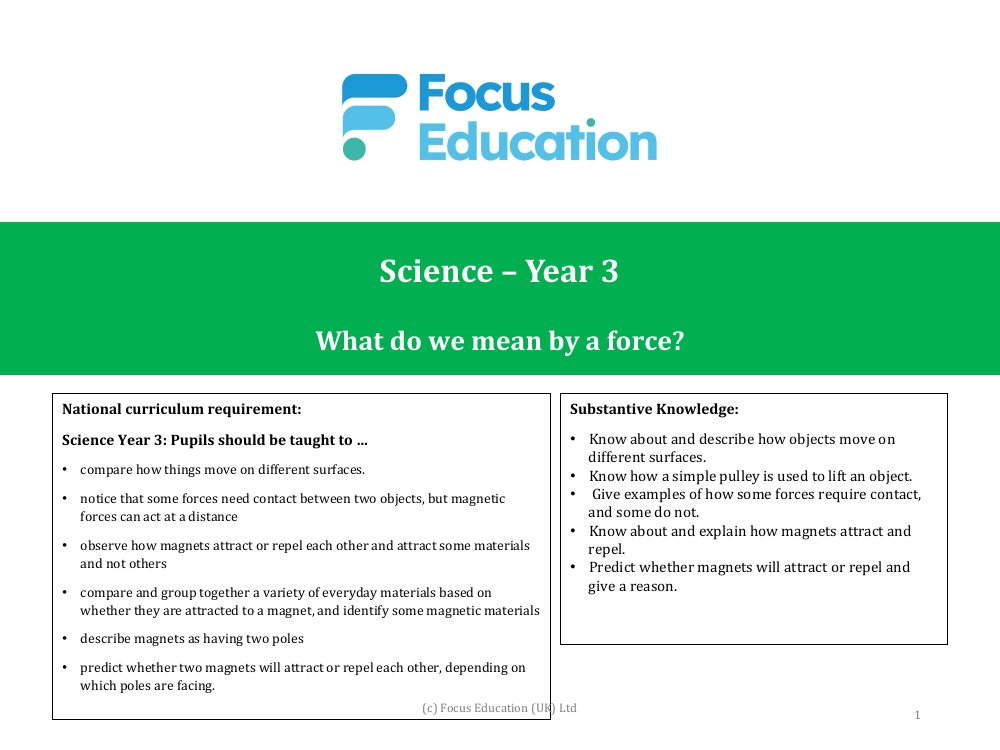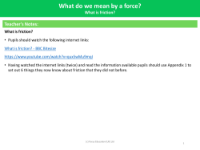What is friction? - Presentation

Science Resource Description
Friction is a fundamental force that occurs when two surfaces come into contact and attempt to move across each other. It acts in the opposite direction to the movement of the object, effectively slowing it down or even stopping it. The amount of friction generated between surfaces depends on their material properties; typically, rougher surfaces create more friction and, as a result, more heat. This force is not always a hindrance; it can be quite beneficial, providing the necessary grip for shoes on a pavement or tyres on a road, preventing slips and skids. Nevertheless, in certain situations, such as within the moving parts of a car engine, friction is undesirable and must be reduced, often through the application of lubricants like oil to minimise wear and heat production.
In Year 3 science, pupils explore the concept of friction alongside other forces. They compare how objects move on different surfaces, learning that some forces, such as friction, require contact between objects, while others, like magnetism, can act at a distance. Through engaging with resources, including videos and practical experiments, pupils are encouraged to observe and describe the effects of friction. They also learn about the use of simple machines, such as pulleys, to lift objects with ease. By grouping materials into magnetic and non-magnetic categories, they delve into the properties of magnets, understanding that magnets have two poles and can attract or repel each other. This foundational knowledge in physics sets the stage for further exploration of forces and their applications in the wider world.




